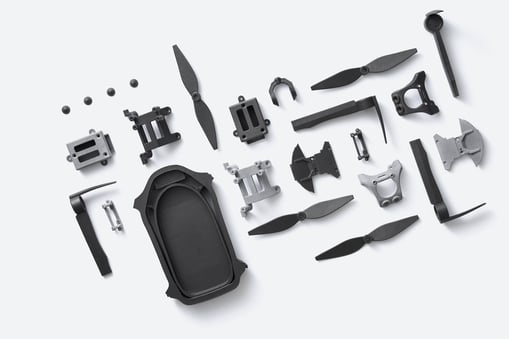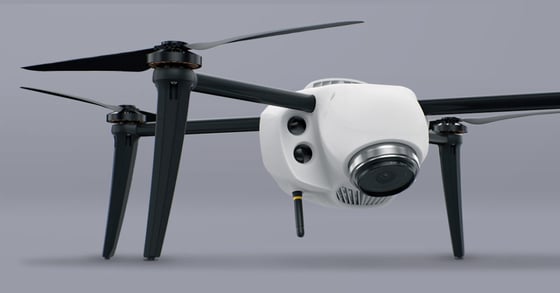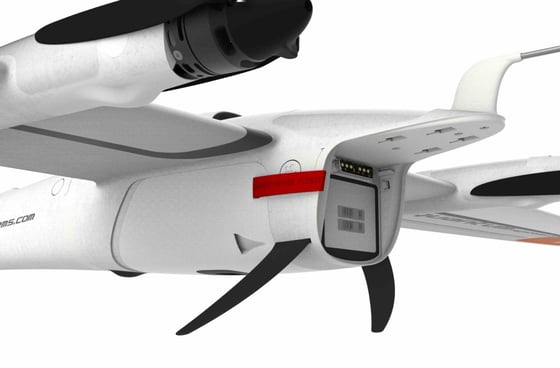
From planes, trains, and automobiles to quadcopters, hexacopters, and octocopters (to super stealth military aircraft) and beyond, the human fascination with flight from Earth continues, and passionately so.
Aerospace “Engineers” have been around forever
Although there is certainly plenty to keep people busy and firmly tethered to the ground, historically the temptation and curiosity have always been too great. Humans have gone to wild extremes trying to simulate flight throughout time, from donning home-made wings to eventually constructing an ongoing evolution of kites, hot-air balloons, gliders, and eventually—an entire industry centered around aircraft.
Drone technology: The benefits have barely been touched on yet
Drones continue to grow in popularity on the corporate and hobbyist level, presenting a unique trend. While human beings are responsible for controlling drones, they are not actually flying in them—thus the unmanned aerial vehicle (UAV) moniker. This doesn’t mean there aren’t safety concerns though, especially as traffic in the skies increases and drones—although now allowed to fly in daylight hours while in the sight of the operator—are fairly unregulated and can do plenty of damage if they hit a plane or interrupt airport operations.
The vast benefits in using these smaller aircraft are impossible to deny though. While there are numerous, topical pluses like being able to send retail deliveries to thrilled customers within minutes, drones also offer enormous advantages in times of disaster since they can fly into places that may be difficult to get to or would be potentially unsafe for humans. Drones are also programmed to be adept at collecting aerial data, performing surveys and inspections related to infrastructure, real estate—and flying into sites well-known for hazards, like oil fields.
Drones can be vulnerable
As any pilot will tell you, it’s not the flight that’s dangerous, it’s the crashing. In relation to drones, luckily this means human lives aren’t at stake (assuming UAVs aren’t interfering with other flights), but no one likes to see their technology smashed up either. Advanced technology requires advanced materials and in the case of a drone, prototyping is critical to avoid as many “crash and burn” scenarios as possible while navigating through the elements.
While there are obvious parts that can’t be 3D printed—such as complex electronics—housing accessories can be fabricated—along with making everything from propellers to landing gear, and a long list of other parts and cases.
Shapeways offers a variety of materials and finishes

Here are some of the materials Shapeways commonly offers for 3D printing drones:
- Nylon 12 [Versatile Plastic] – It’s hard to imagine a material more aptly named, as Nylon 12 [Versatile Plastic] is also used in applications like architecture, mechanical devices, and even designer jewelry. Larger drone parts can also be printed with Nylon 12 [Versatile Plastic], and are popular due to both the strength and lightweight nature of the material as well as affordability (a huge benefit during the prototyping process too). This material is available in a wide range of colors for dyeing parts, as well as a premium finish.
- PA11 – Another extremely versatile material, PA11 is popular for high-impact applications like aerospace and drone technology. Offered in a natural white finish, PA11 is strong, offers high ductility (the ability to stretch without breaking) and like Nylon 12 [Versatile Plastic], is highly suited for interlocking parts.
- Multi Jet Fusion PA12 – this nylon plastic is also preferable for drones due to its strong and lightweight nature, featuring superior mechanical properties, and good support for intricate structures. MJF Plastic PA12 is available in black or gray, with the option of a smooth and glossy finish.
- Aluminum – while metal 3D printing continues to trend upward for industrial 3D printing, materials like aluminum are suitable for high-performance parts required for aircrafts like drones due to incredible strength and durability. Even better, aluminum is lightweight enough to allow for maximum flying speed in UAVs.
Depending on the type of drone, technology like stereolithography (SLA), selective laser sintering (SLS), multi jet fusion (MJF), or binder jetting may be used. For obvious reasons, the technology must be superior and the materials must be tough, able to handle the elements, and survive the inevitable collision too.
Kespry 3D prints drones for surveying and mapping

Customers like drone manufacturer Kespry (Menlo Park, CA) have worked with Shapeways to 3D print prototypes, as well as lightweight, functional drone parts using industrial technology. Kespry has also been embracing the parts-on-demand system, allowing their company to retain capital while manufacturing customized drones as needed. Due to 3D printing, speed and delivery have improved and their business has been growing.
Known as “The Best Drone Company You’ve Never Heard Of,” Kespry has worked with Shapeways since they began on their journey to create their Aerial Intelligence Platform for surveying and mapping with drones. They have also been the subject of a Shapeways case study thoroughly outlining why 3D printing works so well for their applications.
“When we started with Shapeways, it was before we even had our first customer, and now we have hundreds of drones going out every quarter. And it’s been a smooth transition to get to that point. That’s definitely not true of all of our vendors. Shapeways is one of the few that’s held out throughout that scaling process,” said Jordan Croom, Kespry’s lead mechanical engineer.
Quantum Systems 3D prints drones for eVTOL technology

Another Shapeways case study features Quantum Systems, a Munich-based company using drones for advanced eVTOL (electric vertical take-off and landing) technology. Founded in 2015, Quantum Systems began using 3D printing right away for prototyping.
“Only because of the fact that we have integrated this manufacturing method into our manufacturing and development process, have we been able to significantly reduce development time,” said Florian Seibel, CEO. “For injection molded parts we save around ten weeks by using 3D printed samples to release the CAD data.”
“In general, we order Versatile Plastic and HP (Multi Jet Fusion PA12), sometimes colorized. The material properties are perfect for building light and strong drone parts. We prefer HP at the moment, but for some parts, especially big ones, we order Versatile Plastic due to the price.”
Quantum’s Trinity F90 has successfully delivered medical samples, again making it clear that drones have the potential to be very helpful in making deliveries to remote areas or in dropping supplies during disasters.
Shapeways offers over 10 different technologies for manufacturing, and 90 different materials and finishes. Find out more about custom drone 3D printing with Shapeways here. Upload up to 20 models at a time, receive instant quotes—and look forward to consistent, quality drone parts that are durable and meant to last in tough conditions.



